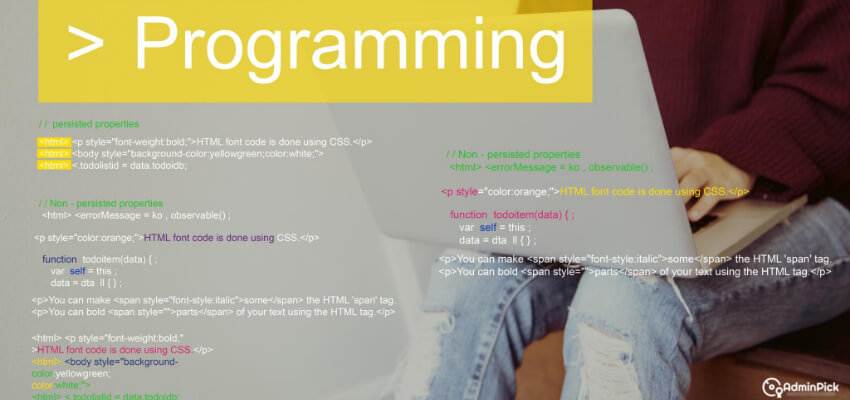AJAX is a programming technique that allows a web application to send and receive data from a server without a full page refresh. AJAX was first introduced by Microsoft in 2005. As of 2018, there are many other alternatives available for developers to use when building a web application. In this blog post, we will take a look at eight of the best AJAX alternatives out there!
The 8 Best AJAX Alternatives:
– Widget Factory
– Dijit
– NodeJS library
– jQuery Mobile Framework
– JavaScript Object Notation (JSON)
– ajx.io
– Ajaxian
– Microsoft Ajax Library (MSAL)
– Dijit – A UI widget framework. It includes over 50 themes as well as numerous widgets including gauges, sliders, or calendars;
– Widget Factory – ajax a javascript library that creates a drag and drop interface for creating a wide range of widgets.
– NodeJS Library called Axios simplifies data requests to RESTful APIs and provides an elegant Promise-based interface for handling server responses.
– JavaScript Object Notation (JSON) is a lightweight data-interchange format that uses a subset of the Javascript scripting language to represent various types of information;
– jQuery Mobile Framework – a mobile interface framework which, unlike its origins in desktop web design, has been optimized for touch interfaces.
– ajx.io – ajx.io a JavaScript library that helps developers to build rich AJAX web applications with a small number of lines of code. Ajax a JavaScript library called Axios simplifies data requests to RESTful APIs and provides an elegant Promise-based interface for handling server responses;
– Microsoft Ajax Library (MSAL) – It is a set of libraries, based on ASP.NET MVC and jQuery Ajax techniques, which simplify development using the latest standards in cross-browser compatibility while allowing you to get more out of your existing Web Server infrastructure.
What Is Ajax?
AJAX stands for Asynchronous JavaScript And XML (or other technologies). A quick definition would be “a way to communicate with a remote computer by exchanging small pieces of information”. This communication happens at intervals or periodically so it does not need reloading entire pages. There also have been libraries created like Microsoft Ajax Library (MSAL) a JavaScript library that provides a modern asynchronous version of the classic ajax. It can also be used when loading new content into a page without refreshing the whole browser window, which makes it faster than traditional methods such as full-page refreshes and reduces server load because only partial data is requested.
Is Ajax Still Used?
This method still seems to have some use cases but not enough are using it so there are many other alternatives out there now such as ajax.io a JavaScript library that helps developers to build rich AJAX web applications with a small number of lines of code.
What Is The Difference Between Ajax And JSON?
Ajax is a programming technique that allows a web application to send and receive data from a server without a full page refresh. JSON is an open-standard format for the exchange of data over a network connection, such as code on the client-side which gets loaded when a user moves their mouse pointer onto an object in order to perform some action;
– AJAX – It stands for Asynchronous JavaScript And XML (or other technologies). A quick definition of Ajax is “a way to communicate with a remote computer by exchanging small pieces of information”. This communication happens at intervals or periodically so it does not need reloading of entire pages.
– AJAX – a way to communicate with a remote computer by exchanging small pieces of information. It can be used when loading new content into a page without refreshing the whole browser window
JSON – It stands for “JavaScript Object Notation” and is an open standard format used by several platforms in order to store their application data objects as strings which are recognized as serialized objects or arrays containing between one and four values: Strings, Numbers, Booleans (True/False), Nulls (Empty Objects) Symbols (Unnamed Objects).
JSON – lightweight data-interchange format using a subset of javascript scripting language to represent various types of information such as strings, numbers, booleans, nulls, and symbols; ajax – a way to communicate with a remote computer by exchanging small pieces of information. It can be used when loading new content into a page without refreshing the whole browser window.
The difference between Ajax and JSON is also that while both are used to encode data, only JSON can be a client-side scripting language.
Is Fetch Considered Ajax?
No – fetch is not considered to be Ajax in the way of the definition.
What Are The Benefits Of Ajax?
AJAX offers many different advantages, such as a faster user experience with fewer full page reloads, a reduction in server load and it can also be used when loading new content into a page without refreshing the entire browser window which makes it far faster than traditional methods like a full page refresh or using XML files to send data back and forth between web pages. Ajax is often more functional than other approaches because most parsing happens on the client-side where there could be JavaScript for dynamic rendering of information instead of servers having to handle all requests. This means that if you have a list with 20 items, your website visitors will only receive 19 responses from the database while waiting for one item to load.

